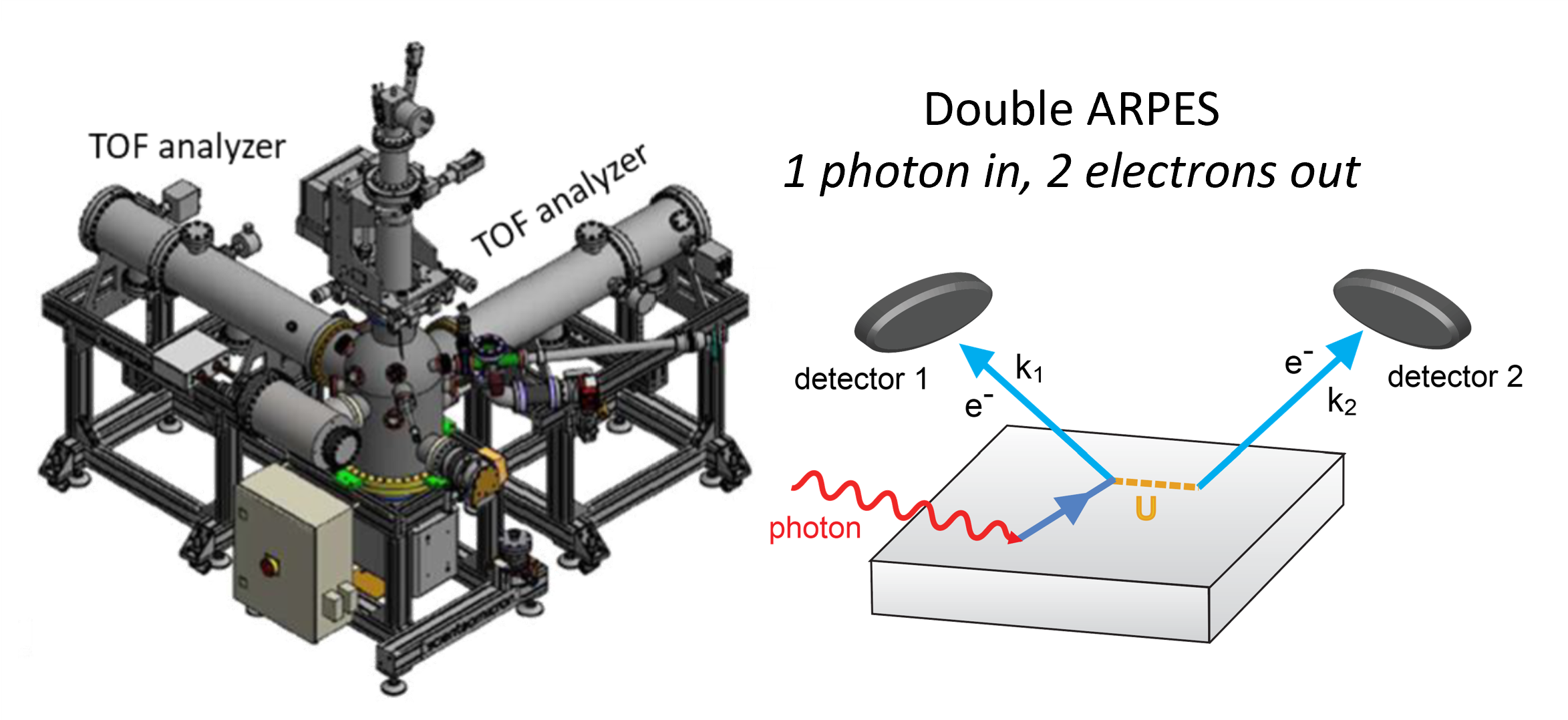Fahad Mahmood
DECODING QUANTUM EMERGENCE WITH DOUBLE PHOTOEMISSION SPECTROSCOPY
 Nearly all existing computing, electronic devices, and energy-related technologies are based on material properties that can be deemed as “classical” (i.e., one does not need to invoke quantum interactions between the constituent particles of the classical material in order to describe its properties). Unfortunately, fundamental limits at which information can be transmitted and preserved in such classical materials is slowing down breakthrough technological advances in next-generation computing and energy-infrastructure. Recent research has indicated that this impasse can be overcome by using quantum emergence which refers to complex phases of matter (e.g., superconductivity) or macroscopic quantum properties (e.g., quantized Hall effects) that spontaneously arise in materials due to many-body interactions between electrons. However, thus far quantum emergence has only been realized at temperatures much below room temperature.
Nearly all existing computing, electronic devices, and energy-related technologies are based on material properties that can be deemed as “classical” (i.e., one does not need to invoke quantum interactions between the constituent particles of the classical material in order to describe its properties). Unfortunately, fundamental limits at which information can be transmitted and preserved in such classical materials is slowing down breakthrough technological advances in next-generation computing and energy-infrastructure. Recent research has indicated that this impasse can be overcome by using quantum emergence which refers to complex phases of matter (e.g., superconductivity) or macroscopic quantum properties (e.g., quantized Hall effects) that spontaneously arise in materials due to many-body interactions between electrons. However, thus far quantum emergence has only been realized at temperatures much below room temperature.
Professor Mahmood proposes to determine the principal rules governing emergent quantum phases of matter by explicitly measuring two-electron spectral functions of materials. These functions are predicted to encode fundamental information about electron pairing and correlation-information which is vital to discover new materials that can sustain superconductivity or interacting topological phases at much higher temperatures than is currently possible. He is developing a Double Angle-Resolved Photoemission Spectroscopy (D-ARPES) instrument which will detect entangled pairs of electrons photoemitted from a material upon absorption of a single photon. If successful, D-ARPES measurements will ultimately transform our understanding of electron pairing and correlations in a range of quantum materials such as strange metals, doped Mott insulators, unconventional superconductors, and interacting topological phases.
